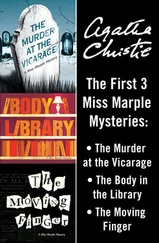Robert Monroe - Journeys out of the body, Practical Guidebook
Здесь есть возможность читать онлайн «Robert Monroe - Journeys out of the body, Practical Guidebook» весь текст электронной книги совершенно бесплатно (целиком полную версию без сокращений). В некоторых случаях можно слушать аудио, скачать через торрент в формате fb2 и присутствует краткое содержание. Жанр: Старинная литература, на английском языке. Описание произведения, (предисловие) а так же отзывы посетителей доступны на портале библиотеки ЛибКат.
- Название:Journeys out of the body, Practical Guidebook
- Автор:
- Жанр:
- Год:неизвестен
- ISBN:нет данных
- Рейтинг книги:5 / 5. Голосов: 1
-
Избранное:Добавить в избранное
- Отзывы:
-
Ваша оценка:
- 100
- 1
- 2
- 3
- 4
- 5
Journeys out of the body, Practical Guidebook: краткое содержание, описание и аннотация
Предлагаем к чтению аннотацию, описание, краткое содержание или предисловие (зависит от того, что написал сам автор книги «Journeys out of the body, Practical Guidebook»). Если вы не нашли необходимую информацию о книге — напишите в комментариях, мы постараемся отыскать её.
Journeys out of the body, Practical Guidebook — читать онлайн бесплатно полную книгу (весь текст) целиком
Ниже представлен текст книги, разбитый по страницам. Система сохранения места последней прочитанной страницы, позволяет с удобством читать онлайн бесплатно книгу «Journeys out of the body, Practical Guidebook», без необходимости каждый раз заново искать на чём Вы остановились. Поставьте закладку, и сможете в любой момент перейти на страницу, на которой закончили чтение.
Интервал:
Закладка:
After awakening, try to perform a backwards somersault over the head without using any physical muscles.
BULGE THE EYES:
Upon awakening, bulge out or widen the eyes without opening them. Frontal movement toward separation may result.
Separation techniques are united by a singular idea: nothing should be imagined, movement should be attempted without the use of physical muscles. The techniques produce the same sensations of movement felt in real life. If nothing happens immediately after trying, then the technique is not going to work, though it may deliver results at a later time. A practitioner will instantly be able to recognize if the technique has worked. However, people are often unprepared for the realness of the sensations and think that they are making a physical movement instead of realizing that a part or all of the body has separated. After this unfortunate failure, careful analysis helps to understand what happened and plan for a successful retry.
If separation was incomplete or took place with some difficulty, this is a signal that the technique is being performed correctly.
Strength and aggressive effort are required from this point to achieve complete separation. For example, if some movement began and then stopped after having made some progress, then one should go back and move even harder once again in the same direction.
In order to practice separation techniques, lie down with the eyes closed and attempt all of them over the course of several minutes.
Separation has likely been accomplished if no muscles twitch or strain and a sensation of movement occurs. There will be a strong, almost physically palpable internal effort to perform a movement.
Naturally, no physical movement actually occurs and the practitioner remains prone and immobile; however, at the right moment, these actions will lead to an easy entrance into the phase.
Interesting Fact!
Approximately 1% to 3% of the time that the phase is practiced, one realizes immediately upon awakening that one has already separated. This means that one may already go somewhere and stand, lie down, sit down, etc. This is not however becoming conscious in a dream, but an actually awakening.
THE BEST TIME TO PRACTICE
The key to practice is the quantity and quality of attempts made that hone a practitioner’s skills. There are several windows of time best suited for employing indirect techniques.
To begin, it should be stated that sleep follows a cyclical pattern.
We awaken every hour-and-a-half and then quickly fall asleep again, which gives rise to sleep cycles. Furthermore, we experience two primary stages of sleep: rapid eye movement (REM) sleep, and non-rapid eye movement (NREM) sleep. NREM sleep includes many internal stages. The more we sleep, the less the body needs deep NREM sleep, and the more time we spend in REM sleep. Phase entrance is most likely to occur during REM sleep.
The best way to implement indirect techniques is by the deferred method . The aim of the method is to interrupt a sleep cycle during its final stage and then disrupt it again after falling back to sleep, which makes sleep light during the rest of the sleep cycle. Sleep accompanied by frequent interruptions can be put to productive uses.
For example, if a practitioner (let’s call him Jack) goes to sleep at midnight, then Jack should set an alarm for 6 o’clock in the morning.
Upon awakening, Jack should engage in some sort of physical activity, like going to the bathroom, getting a drink of water, or reading a few pages of this book. Afterward, Jack should go back to bed thinking about how, within the next two to four hours, he will wake up multiple times and make an attempt to enter the phase during each awakening.
If Jack goes to bed earlier, then his alarm clock should be set back by that amount of time, since six hours of initial sleep is the optimal length of time. If Jack sleeps less than six hours, then the second half of his night’s sleep will be too deep. If Jack sleeps longer than six hours, then there will be little time remaining for attempts, or Jack may not even be able to fall asleep.
If a practitioner naturally wakes up in a forceful manner, it will be difficult to regain sleep. Thus, it will not be necessary for the practitioner to get out of bed with the aid of an alarm. The practitioner should attempt to go right back to sleep.
Naturally, the deferred method is most applicable in cases where it is possible to sleep as long as a practitioner desires, without having to wake up early. Not everyone enjoys such luxury on a daily basis, but nearly everyone has days off when time may be set aside to practice the deferred method. It is in large measure due to the deferred method that classroom courses at the School of Out-of-Body Travel allow up to 2/3 of class participants to enter the phase in the course of a single weekend!
The second most effective window of time for entering the phase is ordinary morning awakening. This generally occurs during light slumber following a full night’s sleep.
Another effective time to practice indirect techniques is after awakening from a daytime nap. Once again, this type of sleep will be light and short, which provides the body needed rest while allowing memory and intention to be kept intact through the moment of awakening. Again, not everyone has the luxury of taking daytime naps, but if such a chance arises, then it would be very beneficial to take advantage of the opportunity.
Nighttime awakenings are the least effective times for phase experimentation because the brain still requires a lot of deep sleep at this time. Awakening at night, the mind is quite weak and hardly capable of any effort. Even if some results are observed, awakening often ends with quickly falling back asleep. This is not to say that normal practice of the phase cannot occur at night; it just won’t be as effective as at other times. The nighttime option is best for those who lack an opportunity to use other windows of time for practicing the phase.
Understand that we awaken at night every 90 minutes, which is why a minimum of four awakenings is almost guaranteed when sleeping, even for just six hours. When the practitioner knows about this and strives to seize those moments, with time he will actually seize them and take advantage of them.
CONSCIOUS AWAKENING
Conscious awakening is waking up with a particular thought in mind; ideally, a thought about indirect techniques. In order to start using indirect techniques upon awakening, it is not sufficient to have a cursory knowledge of the techniques to be used when waking. Due to the peculiarities of the human mind and its habits, it is not always easy when waking to recall any particular motive or idea. The goal of conscious awakening is to practice instant action without being idle after waking up.
Interesting Fact!
There exists a belief that the phenomenon of out-of-body travel is practically unattainable, and is accessible only to an elect few through practices that require secret knowledge. However, the greatest difficulty when trying to experience out-of-body travel in a short period of time lies only in immediately remembering about the techniques upon awakening without moving. This is all simple and straightforward. But it is precisely this trifle that is the largest stumbling block when trying to experience such an uncommon phenomenon.
This is not difficult at all for approximately 25% of the population. However, for the other three-quarters of the population, this is an difficult barrier to entry that can even seem insurmountable.
Читать дальшеИнтервал:
Закладка:
Похожие книги на «Journeys out of the body, Practical Guidebook»
Представляем Вашему вниманию похожие книги на «Journeys out of the body, Practical Guidebook» списком для выбора. Мы отобрали схожую по названию и смыслу литературу в надежде предоставить читателям больше вариантов отыскать новые, интересные, ещё непрочитанные произведения.
Обсуждение, отзывы о книге «Journeys out of the body, Practical Guidebook» и просто собственные мнения читателей. Оставьте ваши комментарии, напишите, что Вы думаете о произведении, его смысле или главных героях. Укажите что конкретно понравилось, а что нет, и почему Вы так считаете.










